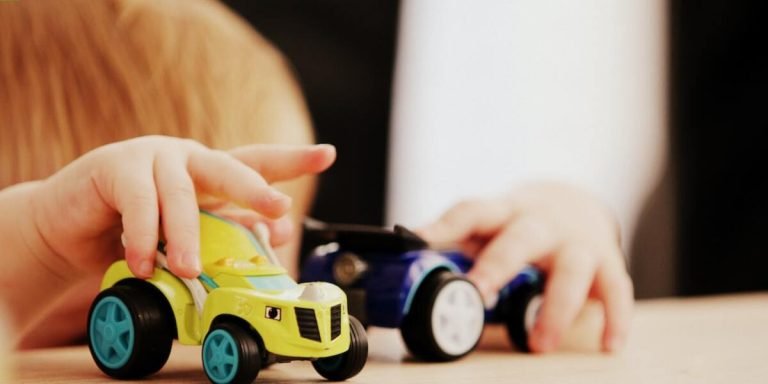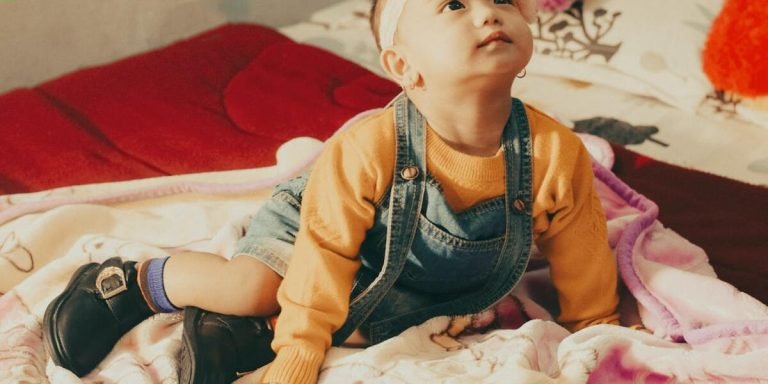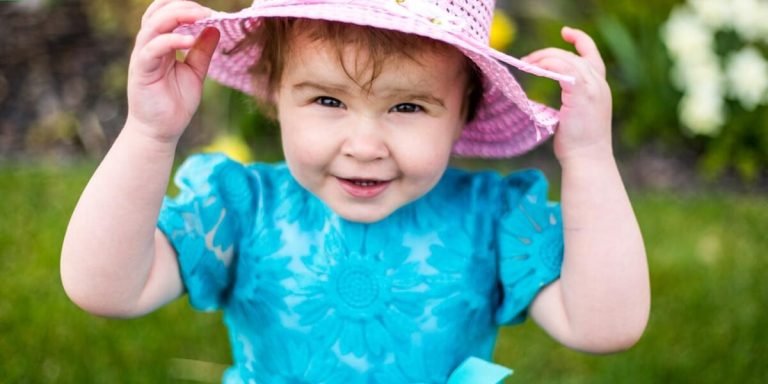Preschool at Home: Nurturing Your Child’s Early Learning Journey
Embarking on the journey of preschool at home is a bold and rewarding step many parents are choosing to take. This early learning pathway provides flexible, personalized education opportunities for youngsters while nurturing their inherent talents and interests. It allows caregivers to instill foundational ways of thinking that will prepare them for success in further schooling stages.
Doing preschool at home may be daunting initially; however, with careful planning, it can become an enriching experience for both parent and child alike. Emphasizing Early Childhood Education principles ensures your little one’s academic growth is coupled with socio-emotional development—making this adventure more than just ABCs and 123s but rather shaping well-rounded individuals ready to conquer future learning challenges.
Did you know?
Did you know? A study published by Harvard University shows that children who receive high-quality education in their early years (ages 0-5) tend to have better health, social-emotional, and cognitive outcomes than those who don’t.
Unveiling the Essentials of Preschool at Home
In the terrain of early childhood education, “preschool at home” emerges as a powerful trend in 2023. As parents and caregivers alike seek to provide their youngsters with sound educational foundations, many are turning towards the comforts and familiarity of home environments for this pivotal learning phase.
The concept of ‘Preschool at Home’ revolves around creating an enriching environment within your domicile that stimulates young minds while fostering overall cognitive development. The key lies not just in academic teaching but also capturing the essence of social-emotional learning which is typically a vital part of traditional preschool settings.
Taking on such responsibility may seem daunting initially; however, remember you’re already equipped with one crucial element – understanding your child’s unique needs better than anyone else could. Marrying this knowledge with carefully selected educational resources can produce a balanced curriculum that covers all bases from literacy to numeracy through play-based activities tailored specifically for kids aged two to five years old.
Importantly though, forming smart strategies designed explicitly according to individual interests helps children enjoy their formative education journey without feeling overwhelmed or stressed out unnecessarily. It serves as both an effective approach toward achieving established learning goals and nurturing well-rounded individuals prepared for future scholastic endeavors seamlessly transitioning them into formal school life when they’re ready rather than purely based on age criteria alone.
As we explore further aspects about embarking successfully upon this homeschooling venture throughout our blog series keep in mind it’s never too late or too soon start planning today!
Creating a Structured Daily Routine for Toddlers
Building a structured daily routine for toddlers can be an instrumental step towards successful preschool at home. By introducing structure and consistency, we not only foster healthy habits but also contribute to their emotional stability.
To begin with, start your day early. The morning is a great time when kids have the highest energy levels and are more receptive to learning new skills. Morning routines could include brushing teeth, having breakfast together, followed by some basic chores tailored according to their age group.
Next comes active playtime where you incorporate both physical activities like dancing or running around in the backyard as well as mentally stimulating games that fuel creativity such as puzzles or Lego blocks.
After exerting all this energy during playtime come meal times interspersed throughout the day – one right after active playing hours another post nap-time following up with snacks even between these main meals. Make sure they help set table make it fun game teach them manners along way!
Selecting Age-Appropriate Learning Activities
Choosing the right learning activities for your child during homeschooling is a crucial step in setting an effective preschool at home. It’s paramount that these resources align not only with their developmental stage but also engage and motivate them to learn.
Physical development can be aided through easy-to-do fun exercises or games which simultaneously cultivate motor skills like hopping or bouncing balls outside. Cognitive abilities are honed by introducing simple problem-solving assignments; think jigsaw puzzles or blocks construction sets where they build objects following instructions.
As per emotional-social development objectives , storytelling sessions work wonderfully as it builds empathy while teaching values subtly . Language proficiency should ideally involve phonics-based learning system starting from alphabets comprehension leading onto word formation gradually.
Factor in the interest levels too when you’re choosing materials for creating a conducive preschool at home environment.. A kid fascinated by space might find planets-shaped math counters interesting compared against conventional round ones. And whilst painting alphabet cards perhaps use vibrant watercolors instead of commonplace crayons if art catches their fancy!
Setting Up an Effective At-Home Learning Environment
Creating a conducive learning environment at home for your preschooler is crucial to their early education journey. With the current year being 2023, many parents are increasingly opting for home-based learning systems due to advantages such as flexibility and personalized study plans. However, this shift also comes with its own set of challenges like keeping young learners motivated and engaged during lessons.
Parents may often question what comprises an effective at-home learning environment? The answer lies in making use of engaging and age-appropriate tools that help stimulate youngsters’ curiosity while ensuring discipline remains intact just like any traditional classroom setting would provide.
Designing an efficient space starts by choosing a specific area within the house which can be dedicated solely to educational activities. This enables children associate it exclusively with playtime or recreational activities thereby instilling focus towards studies when they’re present there. A clean, clutter-free setup coupled with accessibility ensures kids get hands-on experience on various practical aspects combined with theoretical knowledge.
Interactive resources such as colorful flashcards, storybooks accompanied by visual aids facilitate comprehensive understanding among these little scholars promoting holistic growth right from infancy stage up until school readiness years facilitating successful transition into formal schooling system eventually in their academic life ahead.
Designing a Stimulating Educational Space
Creating an engaging and stimulating educational space for preschool at home can be a game-changer in your child’s early learning process. In the current era of 2023, many parents are opting to homeschool their children during these tender years. Crafting this space with thoughtful consideration will foster creativity, encourage intellectual growth, and instill a love for learning.
The first step is choosing the right location within your home that allows natural light accessibility as well as enough room for movement. It should preferably be someplace quiet yet vibrant enough to spark curiosity in little minds.
A digital corner might prove beneficial too considering it’s 2023! Toddlers nowadays interact naturally with technology from quite an early age; hence integrating aspects like tab-based activities could nourish those tech-inclined neurons while also promoting interactive learning.
Don’t neglect environmental aesthetics either! Walls portraying fun-filled themes via wallpapers or handprints on paint-smeared canvases hanging around serve dual purpose – igniting imagination whilst adding vivacity!
Choosing Educational Materials and Resources
Choosing the right educational materials and resources is a critical step in setting up an effective at-home learning environment for your preschooler. Let’s delve into how you can achieve this.
Firstly, align all chosen materials with your child’s developmental level. It’s vital to select age-appropriate tools that will keep them engaged while fostering growth in key areas such as cognitive development, motor skills, language acquisition, and social-emotional health.
Secondly, look out for multisensory supplies. Kids learn best when they’re able to touch, see and hear concepts being taught – so try incorporating items like textured alphabet letters or phonics games that combine sight and sound elements.
Next on the list would be selecting various children’s books — both fiction and non-fiction ones— tailored towards their interests. This not only entices them to read more but also introduces diverse topics of conversation around which playtime activities could revolve flexibly adapting “preschool at home” teaching methods effectively.
It’s 2023! Technology has seeped extensively into education bringing forth interactive eLearning platforms offering engaging online programs tailored toward early childhood learning needs? They make great additions – complementing traditional pedagogical methods quite well if used rightly!
Measuring Progress in Home-Based Early Education
The importance of measuring a child’s progress in home-based preschool programs cannot be overstated. With the prevalence of homeschooling on the rise, more parents worldwide are looking for effective ways to track and assess their children’s developmental advancement at an early age.
In traditional educational settings, we have teachers’ observations, report cards and standardized tests through which progression is evaluated. But when it comes to facilitating preschool education from our living rooms or study areas – how can one effectively monitor growth? The key here is recognizing that assessments in early childhood do not solely rely on academic performance but encompass various domains including emotional stability, social skills development as well as physical dexterity.
Personalized learning materials enhance creative abilities while encouraging independent thought processes among young learners at home. Carefully planned activities provide opportunities for honed cognitive skills such as problem solving techniques and critical thinking capabilities fostering pre-mathematics proficiency amongst toddlers.
Invest time in understanding the factors that shape a healthy mindset, as they lay strong foundations for future endeavors during the impressionable years. For preschoolers at home:
- Encourage curiosity and exploration to promote cognitive development.
- Foster emotional intelligence by validating their feelings and teaching empathy.
- Provide a stable environment that balances routine with new experiences.
- Model positive behaviors, such as resilience and problem-solving skills.
These steps can help build a robust foundation for lifelong learning and well-being.
- Note general patterns rather than isolated incidents.
- Observe whether your child shows curiosity about their surroundings.
- Check if they express eagerness during interactive sessions.
These observations may indicate a developing affinity toward particular subjects and assist you in creating lesson plans that align with evolving interests, thus enhancing skills over time.
Establishing Benchmarks for Preschool Milestones
In the current climate, when many parents choose or are necessitated to facilitate preschool at home due to a variety of reasons, it’s vital for them to establish benchmarks regarding their child’s development. This becomes an essential component in monitoring the progress within their early childhood education journey.
Firstly, understanding developmental milestones is crucial. Children typically achieve specific skills around a certain age range—these recognized accomplishments become measurable indicators of your child’s growth and learning. They could be anything from saying ‘mama’ for the first time or taking those initial baby steps – both momentous occasions indicating significant physical and cognitive progression.
However, while these general markers offer guidance about what you may anticipate as your kid grows older; they are simply not absolute rules. Each child possesses unique abilities that develop in their own distinct timelines which need acceptance allowing room for individual variations.
Next comes setting goals aligned with daily activities providing ample opportunities to reach these set targets resulting into meaningful interactions supporting various domain areas like social-emotional competencies motor skills , language proficiency etc ultimately bringing about holistic improvements.
Moreover usage of data tools such as digital journaling apps can prove extremely beneficial keeping track ensuring regular updates on how well our children meet objectives aiding us stay informed plus recognize areas requiring further assistance thereby creating more productive teaching-learning experiences promoting overall welfare via this methodical approach.
Tracking Development Through Play and Interaction
In preschool at home scenarios, progress tracking becomes a critical aspect of the early education process. How well your child is developing and acquiring skills can often be gauged through playful interactions.
One fun way to track development in young learners lies within their playtime activities. Children develop essential cognitive abilities during play; like problem-solving capabilities, learning new words, understanding ideas or concepts etc. Observe if they try different strategies when facing challenges such as stacking blocks higher or completing puzzles faster than previous times.
Social interaction plays an immense role in shaping a child’s personality and social intelligence. Early childhood gives them opportunities for countless interactive sessions with parents, siblings or peers which improves their emotional quotient(EQ). For instance: If your child shares toys willingly without prompting from you consistently over two weeks that could signal some positive steps towards empathy and sharing behavior.
Communication is another important sphere where children show remarkable changes as part of growing up – both verbal & non-verbal communication improve day by day as they make sense of people around them and express themselves better each passing week.
Watch out for these subtle signs: Have conversations improved? Are emotions being expressed properly? Does your little one respond appropriately to instructions?
Active participation also speaks volumes about how engaged kids are while learning at home- Do they ask questions actively? Show curiosity about things happening around them? This unquestionably indicates mental growth!
Conclusion
In the grand scheme of things, choosing to embark on a preschool at home journey is truly an invaluable investment you make in your child’s future. As we’ve discussed throughout this article, it provides endless opportunities for individualized learning and growth right from their formative years. And guess what?
You’ve got all the tools needed to kick start this exciting endeavor; love for your little one, commitment towards their overall well-being and our expert inputs here!
Having said that dear reader – remember there’s no ‘one size fits all’ approach when it comes to early childhood education. So feel free to browse further through our website resources – they’re teeming with engaging content centered around educating children as per their unique needs! For anyone who wears many hats like parent or educator; let us assure you: support isn’t just available – it’s plentiful here!







